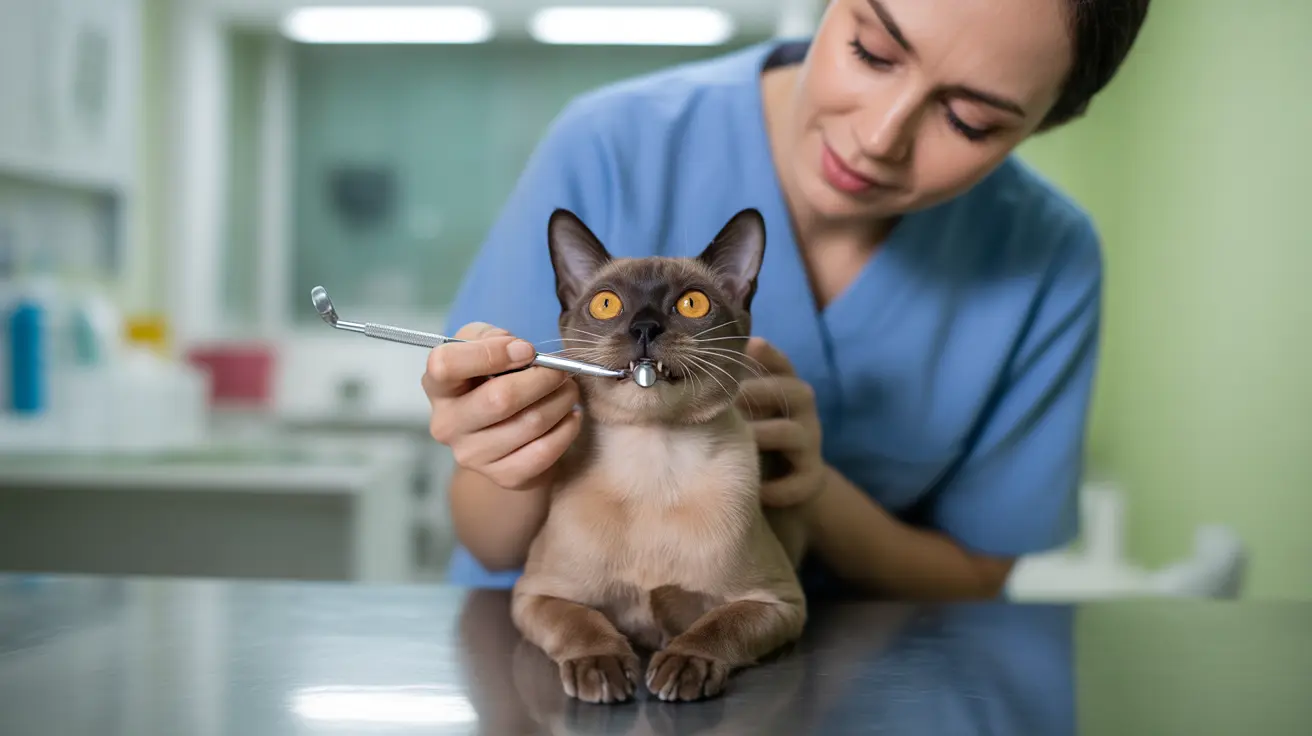Burmese cats are beloved for their affectionate personalities and impressive longevity, but like all breeds, they face specific health challenges. Understanding these potential issues is crucial for providing optimal care and ensuring your Burmese companion lives a long, healthy life.
In this comprehensive guide, we'll explore the various health concerns that can affect Burmese cats, from genetic conditions to age-related diseases, and provide valuable insights on prevention and management strategies.
Genetic and Hereditary Health Concerns
Burmese cats can inherit several genetic conditions that potential owners should be aware of:
Craniofacial Abnormalities
The Burmese Head Defect is a serious genetic condition that can cause severe skull and facial deformities in kittens. This condition occurs when both parent cats carry the specific gene mutation, making genetic testing crucial for breeding pairs.
Neurological Disorders
Gangliodosis, a fatal neurological condition, can affect Burmese kittens within their first six months of life. Additionally, some Burmese cats may develop congenital vestibular syndrome, which affects balance and coordination.
Common Age-Related Health Issues
Kidney Disease
Chronic kidney failure is particularly common in aging Burmese cats. Early warning signs include increased thirst, frequent urination, and weight loss. Regular veterinary check-ups can help detect kidney problems before they become severe.
Diabetes Mellitus
Burmese cats show a higher predisposition to diabetes compared to other breeds. This condition requires careful management through diet, medication, and regular blood sugar monitoring.
Dental and Eye Health
Dental Disease
Oral health problems, including gingivitis and periodontitis, are common in Burmese cats. Regular dental cleaning and preventative care are essential to avoid complications that can affect major organs.
Eye Conditions
Corneal sequestration and other eye disorders frequently affect this breed. Watch for signs like eye discoloration, excessive tearing, or apparent discomfort, as early treatment is crucial for preventing vision loss.
Preventative Care and Management
To maintain your Burmese cat's health:
- Schedule regular veterinary check-ups
- Maintain proper dental hygiene
- Monitor weight and diet carefully
- Provide environmental enrichment
- Consider genetic testing before breeding
- Keep vaccinations current
Frequently Asked Questions
What are the most common genetic health issues affecting Burmese cats and how can they be detected early?
The most common genetic issues include craniofacial abnormalities, gangliodosis, and hypokalemia. Early detection involves genetic testing, regular veterinary examinations, and monitoring for specific symptoms like muscle weakness or facial deformities.
How long do Burmese cats typically live, and what factors influence their lifespan?
Burmese cats typically live 14-25 years, with some reaching up to 35 years. Factors affecting lifespan include genetics, diet, indoor/outdoor lifestyle, regular veterinary care, and overall health management.
What symptoms indicate Burmese cats might be suffering from orofacial pain syndrome or dental disease?
Signs include facial pain, difficulty eating, pawing at the mouth, drooling, bad breath, and sometimes self-mutilation. Regular dental check-ups can help prevent these conditions.
How can I prevent and manage chronic conditions like kidney failure and diabetes in my Burmese cat?
Prevention includes maintaining a healthy diet, regular exercise, weight management, and routine health screenings. Early detection through regular blood work and urinalysis is crucial for effective management.
What are the best veterinary and home care practices to reduce health risks in Burmese cats?
Best practices include regular veterinary visits, maintaining dental hygiene, providing a balanced diet, ensuring adequate exercise, and creating a stress-free environment. Early intervention for any health concerns is essential for optimal outcomes.
Conclusion
While Burmese cats may face certain health challenges, most can live long, healthy lives with proper care and attention. Understanding these potential health issues and maintaining regular veterinary care are key to ensuring your Burmese cat's wellbeing throughout their lifetime.






